Sustainable Web Design 2025: Trends and How to Reduce Environmental Impact

Explore the latest sustainable web design trends for 2025. Learn how to reduce your website's carbon footprint and create a greener internet.
Sustainable Web Design 2025: Towards a Greener Internet

In the context of increasingly severe climate change, sustainable web design is no longer an option but an urgent requirement. By 2025, the importance of reducing carbon emissions from the internet will be emphasized more than ever. Every website, every line of code contributes to this enormous amount of emissions. Sustainable web design is the key to minimizing negative impacts on the environment, creating a greener, more eco-friendly internet.
What is Sustainable Web Design?
Sustainable web design is an approach to website design that focuses on minimizing negative impacts on the environment. This includes optimizing performance, reducing resource usage, and choosing environmentally friendly solutions in every stage of the design and development process.
Why is Sustainable Web Design Important?
The internet consumes a huge amount of energy, mostly from data centers and user devices. Carbon emissions from the internet are increasing rapidly, contributing to climate change. Sustainable web design helps reduce energy consumption, thereby reducing carbon emissions, protecting the environment, and saving operating costs.
Key Sustainable Web Design Trends in 2025

The year 2025 sees the strong development of sustainable web design trends, focusing on efficiency, minimalism, and eco-friendliness.
1. Minimalist Design
Minimalist design focuses on eliminating unnecessary elements, keeping only what is truly important. This helps reduce website size, increase page loading speed, and reduce energy consumption. A simple, easy-to-navigate design also provides a better user experience. Companies like Vinawebapp.com frequently apply minimalist design styles to optimize website performance for their clients.
2. Image Optimization
Images often account for the majority of a website's size. Optimizing images is one of the most effective ways to reduce website size and increase page loading speed. Using modern image formats like AVIF and WebP, compressing images without reducing quality, and using lazy loading are important techniques.
3. Environmentally Friendly Color Choices
Colors can affect the amount of energy consumed by the screen. Using low-contrast colors, darker color schemes, and avoiding pure white can help reduce energy consumption.
4. Using Green Hosting
Green hosting uses renewable energy sources to power data centers. Choosing a green hosting provider is a direct way to reduce negative impacts on the environment.
5. Responsive Design and PageSpeed Optimization
Responsive design ensures that the website works well on all devices, from desktops to mobile phones. PageSpeed Optimization helps increase page loading speed, reduce data transfer, and improve user experience. Techniques such as Gzip compression, caching, and minimizing HTTP requests are crucial.
Tips and Tricks for Applying Sustainable Design

Web designers can apply many tips and tricks to create more sustainable websites.
1. Using a CDN (Content Delivery Network)
CDNs help distribute website content to users from the nearest servers, reducing latency and increasing page loading speed.
2. Optimizing Source Code
Clean, concise, and efficient source code helps reduce website size and increase page loading speed. Use tools such as minification and code splitting to optimize the source code.
3. Choosing Effective Fonts
Using system fonts or optimized web fonts can help reduce website size. Avoid using too many different fonts.
4. Regular Website Audits
Use tools like Google PageSpeed Insights and GTmetrix to regularly check website performance and identify areas for improvement.
5. Prioritize User Experience (UX)
A website with good UX will help users find information quickly and easily, reducing the time they spend on the website and the amount of data they consume.
Case Study: Successful Sustainable Web Design Websites

Many websites have successfully applied sustainable design and achieved impressive results. For example, the website of an environmental NGO has significantly reduced its carbon emissions by optimizing images, using green hosting, and applying minimalist design. Businesses like Vinawebapp.com are also gradually integrating sustainable design elements into their workflow, creating more environmentally friendly products.
Another example is the website of a renewable energy company, focusing on delivering information efficiently and saving energy. This website uses system fonts, a simple design, and image optimization to minimize energy consumption.
Conclusion and Call to Action

Sustainable web design is not just a trend but a responsibility. Every web designer can contribute to a greener internet by applying sustainable design principles and techniques. Start today, optimize your website, choose environmentally friendly solutions, and inspire others to take action. We can make a big difference if we work together.
Do not hesitate to contact experts like Vinawebapp.com for advice and support in designing and developing sustainable websites, contributing to a greener future for us all.
Remember, every small action matters. Together, we can build a more sustainable internet for the future.

